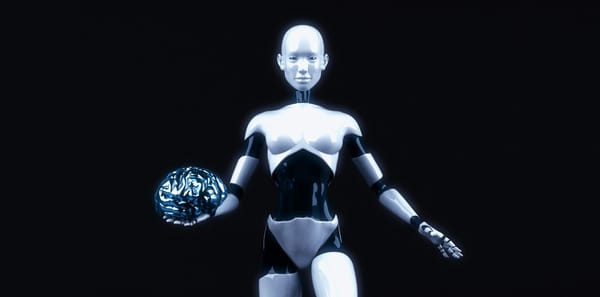Why AI is Your Best Ally in Writing Job Descriptions
Have you ever wondered what is the significance of a good job description? A good job description has an essential value for the recruitment process of every organization. There are many reasons that make job descriptions a significant aspect of recruitment. Let’s elaborate further:
· Attracting the Right Candidates: The need for the right people for a job is, indeed, high. A good job description that clearly outlines the responsibilities and qualifications needed for a job can attract well-suited candidates who possess the right skills and experience for the job.
· Expectation setting: Setting clear expectations is beneficial for both the employer and the potential candidates. It helps candidates understand the job requirements, and they can be well-prepared for the responsibilities that they may acquire.
· Promoting Diversity: A well-crafted job description that uses non-biased language can be appealing to a larger number of candidates. This helps organizations promote diversity and create an inclusive workforce as well.
· Enhancing Employee Satisfaction: Job descriptions that are clearly stating everything needed for an employee to accurately understand their job’s nature and role within the organization can improve their satisfaction. As a result, they can be more engaged and motivated in their work.
Of course, there are a lot more reasons that make good job descriptions, and it would make the list very large, but these are the most essential ones. Job descriptions aren’t just a casualty of the recruitment process but more of a tool that can help organizations build a positive work environment and ensure that they attract top talent.
Unfortunately, it is hard for recruiters to achieve a high-quality job description. Manual job description writing is a traditional method that is accompanied by various shortcomings that can hinder the recruitment process and, consequently, the organization’s overall success. Let’s review some of the shortcomings of manual job description writing:
· Subjectivity and Bias: Manual job descriptions may include subjective and biased opinions inherited by the person crafting them. As a result, these job descriptions limit the candidate pool and negatively affect the organization’s inclusivity efforts.
· Inconsistency: If more than one person is responsible for crafting job descriptions, there will be differences between them, and their language, tone, and content will be inconsistent.
· Time-consuming: Manually crafting job descriptions is, of course, a time-consuming process. This slows down not only the professionals crafting the job descriptions but also the whole hiring process.
· Limited Data Usage: Manually crafted job descriptions are written based on the writer’s own knowledge or past experiences. This means that job descriptions don’t match with the ongoing market trends and attract candidates that are not very well suited to the job.
· Limited Scalability: Manual job description writing may work out for smaller organizations, but as they keep growing and the demand for new hires in various roles is needed, things are going to be very difficult.
Luckily, there’s Artificial Intelligence to help overcome these shortcomings and take job description writing to the next level. AI is capable of revolutionizing the job description writing process by automating and upgrading it. Its language analysis tools can be used to create well-written descriptions that use engaging and inclusive language and tone. Of course, AI’s powers don’t stop there. The descriptions crafted by AI are the results of data analysis, which means that they align with the latest market trends and include all the skills and qualifications needed for the job. All of these help organizations attract well-suited candidates for their vacant jobs and create an inclusive workforce.
There are many benefits that AI provides to job descriptions, transforming them from just an aspect of recruitment to a tool for efficiently attracting and retaining top talent, building a diverse workforce, and increasing an organization’s productivity in the long run. Let’s analyze some of these benefits:
· Language Optimization: AI’s data analysis helps it craft job descriptions that optimize language. This means that it uses keywords and phrases that improve the job description’s visibility in search engines and reach a larger number of candidates.
· Mitigation of Bias and Inclusivity: AI can identify biased language and eliminate it from job descriptions, crafting them to only focus on skills and qualifications, responsibilities, and the job’s objectives. This way, AI helps organizations attract candidates with diverse backgrounds and create an inclusive workforce.
· Data-Driven Descriptions: AI includes a large database in which they analyze and craft efficient data-driven descriptions. This helps organizations attract candidates that are well-suited for a job and reduce wasteful application screening.
· Up-to-Date Descriptions: AI-crafted descriptions are dynamic and adapt to changes in market trends. The adaptability of this kind ensures that the candidates will always be equipped with the right skills and qualifications in the ever-changing industry landscape.
· Saves in Time and Costs: Manual job description writing is a time-consuming process, as we said earlier. With AI’s help, the time needed for crafting a job description is reduced to just seconds, saving HR professionals precious time. Moreover, the time-to-fill for a job is also reduced, leading to reduced costs and less non-productive organizational time.
Addressing Concerns: Is AI Safe and Fair?
On the other hand, some people have concerns about AI. Opinions diverge when it comes to the safety and fairness of AI usage in job descriptions. There are a lot of benefits that AI provides, and most of them are focused on making job descriptions safe and fair. For example, AI’s biased language mitigation contributes to its fairness. Also, its structure and limitations ensure safety and privacy, while there are regulations regarding AI data privacy that algorithms have to comply with. Not to forget, every AI-crafted job description goes through human oversight before making the final cut, and changes can be made if needed. While AI automates processes, human judgment is still needed to make sure that every job description crafted is fair and ethical.
Getting Ready for AI's and Recruitment's Future
Organizations that want to keep thriving in the future will have to be prepared for things coming to the continuously evolving organizational landscape. Technology advancements are already playing a crucial role in the way that organizations operate, but this is slowly transforming into an age of automation. This is achieved by leveraging AI’s powers not only in crafting job descriptions but in most organizational processes.
Organizations that want to be part of this transformation as early as possible can take a step ahead of everyone else and be a great advantage. In recruitment, the AI influence is expected to be in the whole process, from crafting job descriptions and candidate screening to performing automated interviews and matching candidates to jobs. AI’s potential is huge, and organizations need to be agile if they want to be part of the evolving dynamic job market.
For now, organizations can always leverage AI’s powers to craft efficient job descriptions. The benefits provided by smart and efficient job descriptions help organizations attract well-suited candidates with the right qualifications and skills, help candidates accurately understand the objectives and responsibilities of the job offered, create a diverse and inclusive workforce due to the reduction of unconsciously biased language, and create a high-productive workforce that helps organizations grow in the long run.




